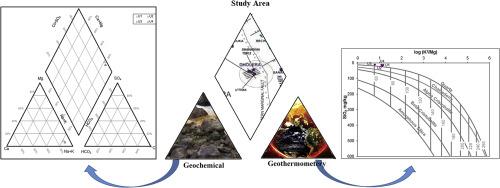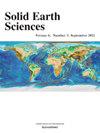Geochemical and Geothermometry study on hot-water springs for understanding prospectivity of low enthalpy reservoirs of Dholera Geothermal field, Gujarat, India
Abstract
While performing various steps for exploration and exploitation of geothermal resources, the applications of geochemical methods are pivotal for reservoir characteristics evaluation. It is used concurrently with geological and hydro-geological appraisals to supplement available information regarding the prospectively of the region of investigation at the relatively low cost compared to geophysical methods or drilling. Temperature range of 40 °C to 47 °C is demonstrated by the study area comprising of several thermal water manifestations. Studies from existing wells and surveys have suggested the presence of a sizable low enthalpy geothermal resource in the field. One of the most prominent uses of geochemical sampling is the determination of subsurface temperatures using Geothermometry. In this study, commonly accepted concepts of cationic and Silica Geothermometry have been applied to understand conditions in the reservoir. Interpretation of the data has given us some input on the reservoir characteristics like reservoir temperature, mixing process and multiple fluid origins. In Dholera geothermal field for determination of variation in hydrochemical facies and understanding of the advancement of the hydrochemical forms, the current research additionally imagines the significance of graphical portrayals like Piper chart, Scholler and so forth individually. The seawater intrudes the composition of water shows the reservoir. The physio-chemical properties of the water also influence exploitation strategies.


 求助内容:
求助内容: 应助结果提醒方式:
应助结果提醒方式:


